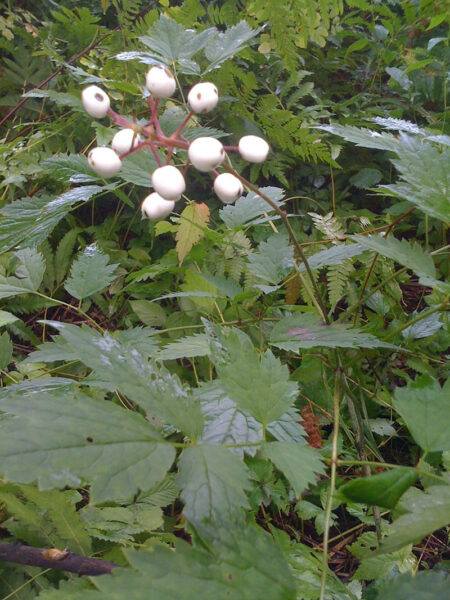Thrives in moist, organically rich, humusy, well-drained soil in part to full shade. Plants may naturalize by self-seeding may occur in optimum growing conditions where the berries fall to the ground. Tiny white flowers appear in spring, but the real show begins as petals fade. Flowering stems thicken and turn red, and pea-sized striking white berries develop in clusters. Each berry has a distinctive small dark purplish spot which gives rise to the common name, doll’s eyes.
The berries are extremely poisonous if eaten, hence another common name of baneberry. Toxicity causes most wildlife to ignore the fruit, with the berry clusters typically persisting on the plants and providing ornamental interest until frost.
